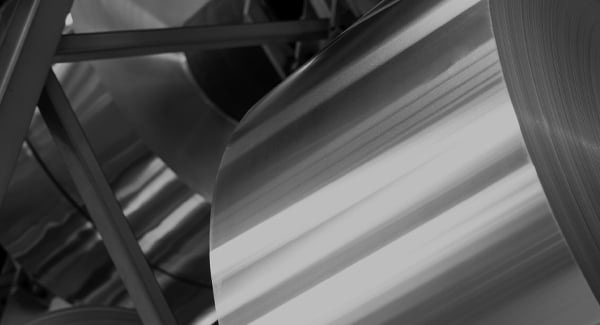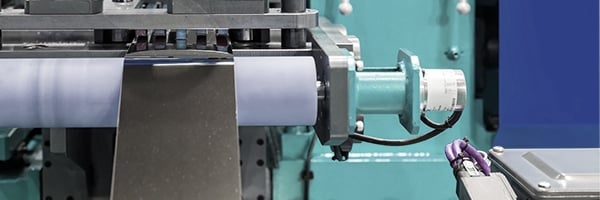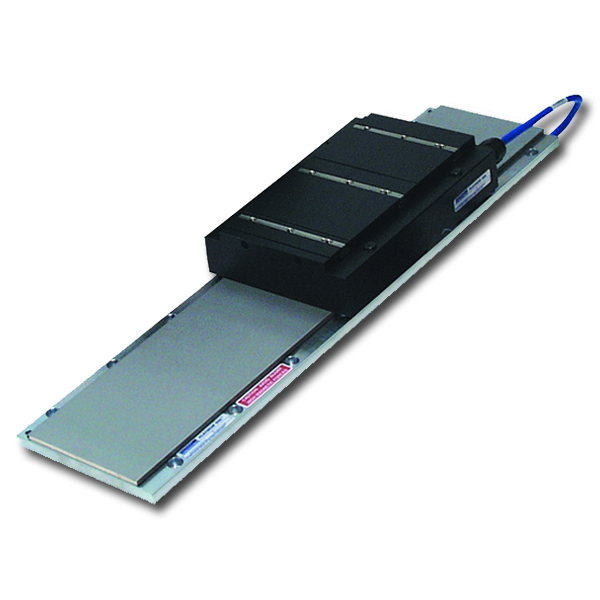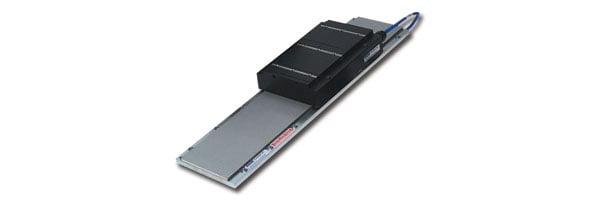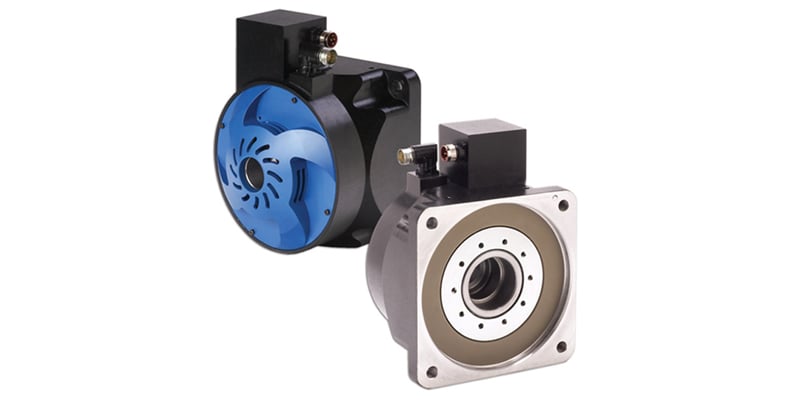
The performance benefits of direct-drive motors are well documented: industry-leading performance, improved accuracy, higher throughput, better reliability and quieter operations. This is because, unlike a conventional motion setup, a direct-drive system connects the rotary or linear motor directly to the load, reducing the number of moving parts in the system. Removing these parts—the gearbox, belts, pulleys and related components—creates a highly dynamic operation with several advantages. Read more about the advantages of direct-drive technology.
However, one overlooked aspect of a direct-drive motion system is the value savings when compared to a conventional system. When comparing the cost of a direct drive motor to a traditional setup, direct drive looks like a costlier solution. But taking a step back and comparing the entire system overtime shows that a direct-drive system is a more cost-effective approach compared to a conventional system. Through calculations and examples based on US markets, we break down the cost savings of a direct-drive system.
Reduced Cost of Parts
Eliminating the gears, pulleys, seal, bearings and other associated components provides an immediate upfront cost savings when compared to a conventional system. We can start to think about the total cost of the system and how these components can be deducted from the cost of the motor. ![Cost Savings on part Equation Cost Savings on Part = Motor Cost – [(Gears) + (timing belts) + (pulleys) + (lead screws) + (seals) + (bearings)]](/sites/default/files/images/kol_3359-MFSC_Blog_Direct- Drive_Cost_Savings_800x100_Equation1.jpg)
The components of the mechanical transmission can cost upward of $300 per system. This is then subtracted from the motor cost. While the initial upfront cost of a direct drive motor might be higher than that of a traditional motor with a mechanical transmission system, eliminating parts provides an immediate cost savings that translates into other long-term savings once installed.
Reduced Labor
Fewer parts translates into reduced labor because there is no need to assemble, mount and align the pulleys, guards, bearings, belts and other components in the system. A direct-drive motor can directly mount to the machine and is self-supported through its own bearings. This not only allows a machine to be produced more quickly but also saves on labor costs. 
The savings will depend on the time of systems, market labor rates and how many hours are needed, but we can estimate that with a labor rate of $150 an hour for two hours of work on two systems the labor costs would be $600. If we only account for one machine and combine this with the cost savings on parts discussed above, the total savings is $900.
An additional cost savings is the elimination of oversized motors to drive the gearbox that can range from $500 to $1,500, which requires more fine tuning of the high inertia loads. Direct drive eliminates the issue of mismatching inertia, which would save additional costs if we factored it in here.
Lower Maintenance Costs
Nonexistent parts can’t wear out. By removing the mechanical transmission from the system, the need to service or replace geared systems is eliminated. Even though there are ancillary costs such as sourcing, ordering and storing parts needed for maintenance, we’ll use the simplest definition of maintenance costs to calculate possible savings: labor plus parts.
We can think of it this way: ![Maintenance Costs Equation Maintenance Costs = [(Gears) + (timing belts) + (pulleys) + (lead screws) + (seals) + (bearings)] + (labor rate * hours)](/sites/default/files/images/kol_3359-MFSC_Blog_Direct- Drive_Cost_Savings_800x125_Equation3.jpg)
Using this formula, we can see that the cost for maintaining a mechanical transmission would include the cost of the parts plus the labor rate for installing those parts. For example, if the total replaceable parts equaled $300 and it took 2 hours to install those parts at $150 an hour, the total maintenance costs would be $600 for parts and labor. Adding this to the cost of the initial parts and installation labor would push the total overall cost during the lifetime of this equipment to $1,200.
Decrease Downtime, Increase Revenue
Fewer parts that require less time for maintenance decreases overall downtime for a machine, which can increase revenue through increased production. One of the biggest expenses for any company is unexpected downtime. This not only comes through the associated maintenance costs outlined above, but also through idle labor, impact on other processes and reduced throughput. To keep it simple, we’ll calculate the costs lost during downtime by looking at the total amount of downtime, average production rate and the gross profit for each unit. 
The variable here is in the actual operating time. A system with 10 hours of planned operating time and 2 hours of downtime that produces 500 units in that time with a gross profit of $25 per unit will experience $3,125 in losses from the 2 hours of downtime. Even if you reduce the downtime by half, or 1 hour, you will realize over $1,700 in savings. This brings it to at least $2,900 so far in savings with direct drive.
Better Performance, Greater Production
Eliminating the mechanical transmission in the system by directly attaching the motor to the load means there is no hysteresis, backlash or lost motion in any direction. The advantage is increased positional, speed and dynamic accuracy, which improves efficiency and allows for better performance.
There are several ways to measure cost savings associated with better performance. There can be fewer defects, reduced labor, more orders and so on. However, for our purposes we’re going to look at throughput. Keeping everything equal except for the direct-drive technology, we’ll look at improving production rather than lowering costs by increasing throughput.
Throughput is calculated as inventory divided by time (R = I/T). The more inventory that can be processed at the same time the more efficient a process. We can think of it as an increase in potential gross revenue as the difference in inventory process multiplied by the unit cost. 
In this case, we can subtract what a traditional motor produces in an hour from that of a direct-drive motor and see the total amount of goods produced. For one customer with a press-feeding machine, Kollmorgen saw an increase in accuracy from 0.002” to 0.0005”. Another customer experienced a 13% increase in throughput at high speeds. Using this increase as an example, going from 500 units per hour to 565 per hour at $15 a unit would add an extra $975 in product gross revenue per hour. Of course, this would ignore the added material costs to maintain this rate. But this can translate into more parts produced or less runtime and labor.
Putting it All Together
No matter where you are during the lifecycle—a new installation or maintaining an existing system—you can experience considerable cost savings with a direct-drive motor. From the upfront costs to better throughput, we can look at everything together to see how the different components work holistically:
- Cost Savings on Part = Motor Cost – [(Gears) + (timing belts) + (pulleys) + (lead screws) + (seals) + (bearings)]
- Install Labor Savings = (labor rate) * (hours) * (number of machines)
- Maintenance Costs = [(Gears) + (timing belts) + (pulleys) + (lead screws) + (seals) + (bearings)] + (labor rate * hours)
- Downtime Costs = Duration of Downtime * (Lost Unit Production * Unit Cost)
- Gross Revenue = ((Ix – Iy)/T)*Unit Cost
The biggest gains come from the reduction of parts needed with direct-drive technology. With fewer parts, there is less need for installation labor and maintenance labor, fewer instances of downtime due to part failure, and greater uptime for more production.
Designing a Direct-Drive System for Your Machine
Looking at the complete system over a typical lifecycle, it’s apparent that a direct-drive system provides cost savings over a conventional system. However, savings and production realizations will depend on the machine, location and industry. It’s important to select and tailor the system to your needs and the needs of the machine.
Kollmorgen has several types of direct-drive systems available with a range of motors, drives, feedback systems and other components necessary to build a more efficient, and profitable, machine. Before designing your next machine, make sure you talk to one of Kollmorgen’s experts to make sure you get the best out of your system.







